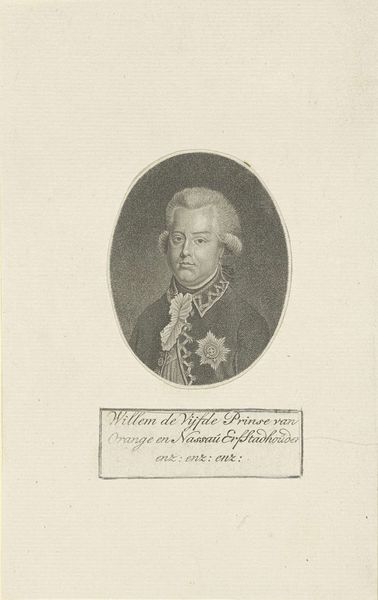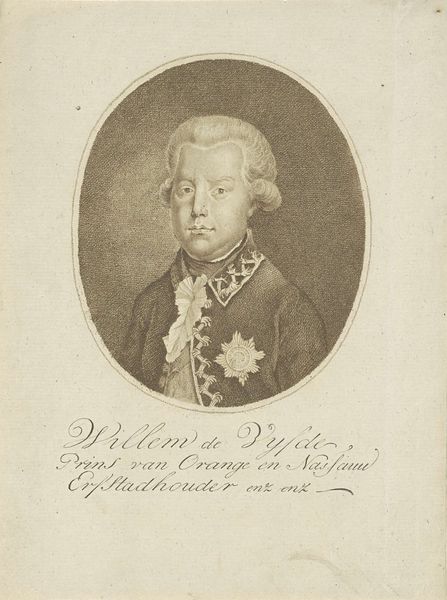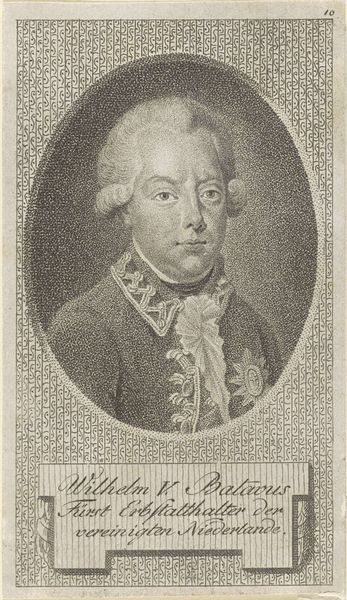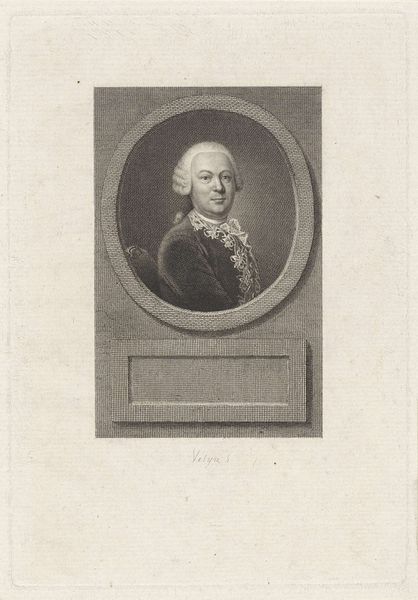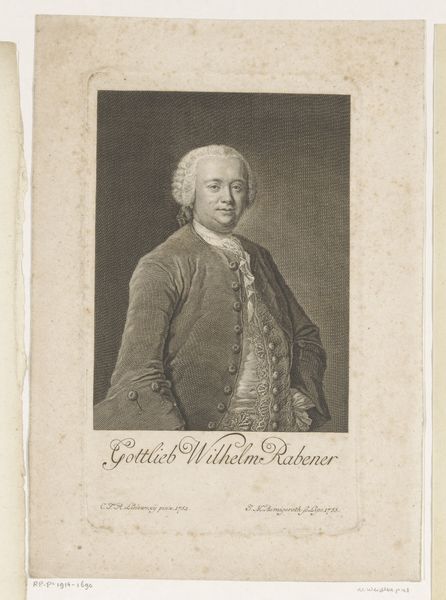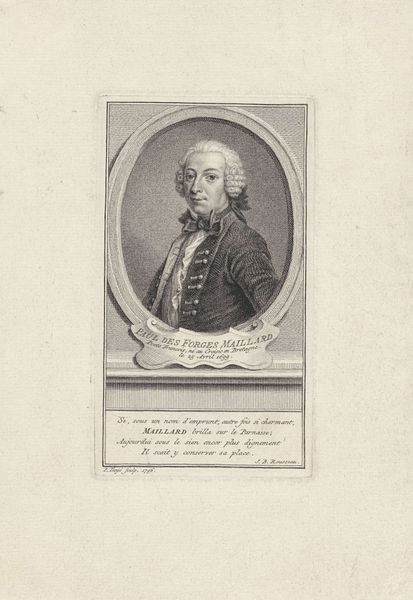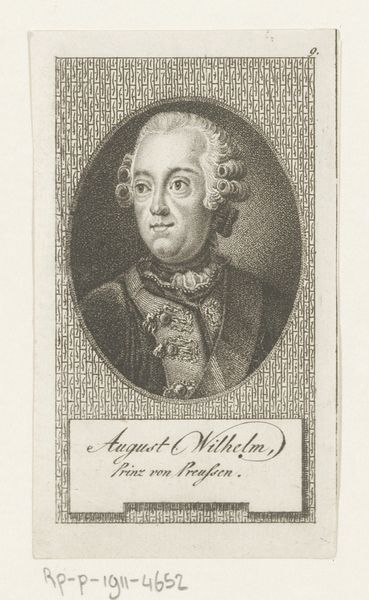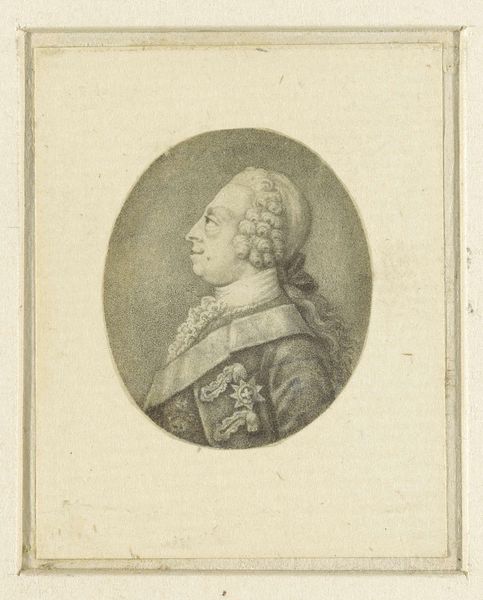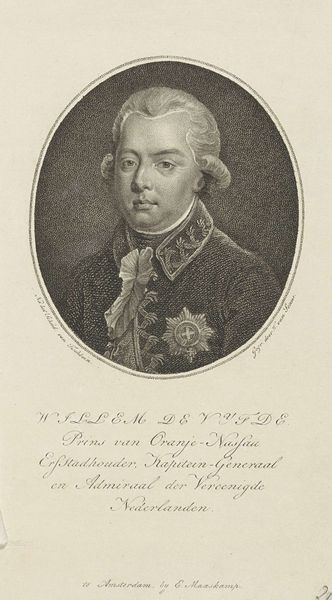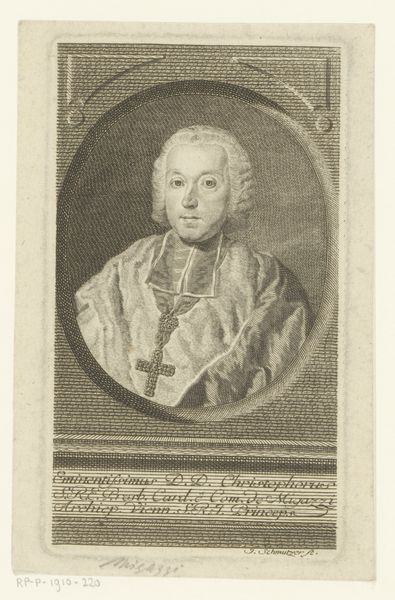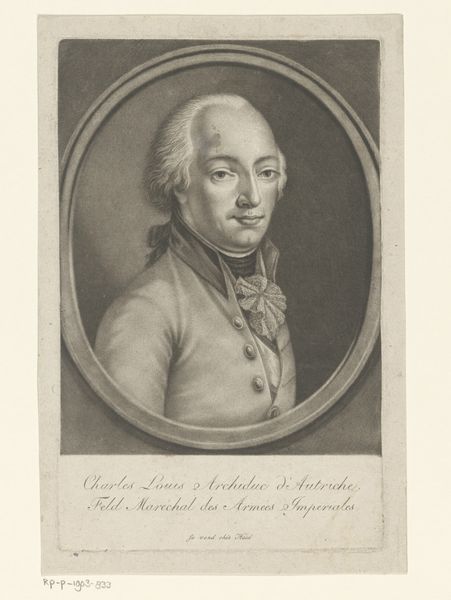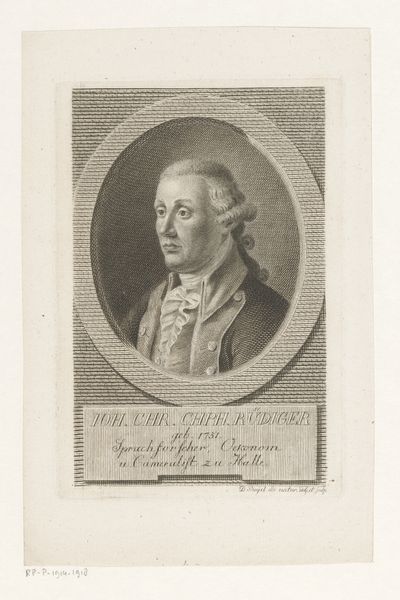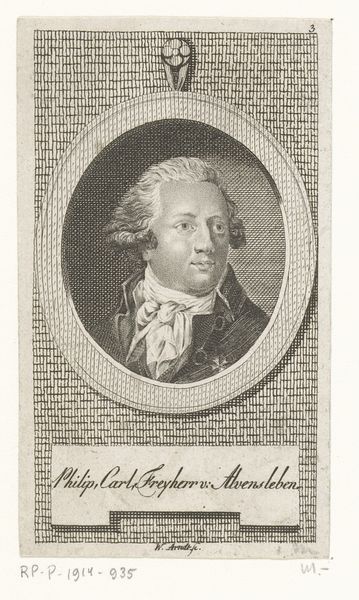
Dimensions: height 261 mm, width 192 mm
Copyright: Rijks Museum: Open Domain
Benjamin Samuel Bolomey made this print of Willem V, Prince of Orange-Nassau, sometime in the 18th century. The portrait presents us with a formal image of power, showing Willem in his official capacity. But it also hints at the shifting political sands of the Netherlands at that time. Made during Willem's reign as Stadtholder, the print employs visual codes of status: his clothing, powdered wig, and the prominent sash and star. The oval frame and inscription further enhance the sense of officialdom, embedding Willem within a tradition of dynastic portraiture intended to project legitimacy and authority. But this image was produced during a period of growing social and political unrest. The Dutch Republic was facing internal divisions and external pressures from revolutionary movements abroad. Looking closely, one might ask: Is this image projecting strength, or compensating for instability? To understand this fully, we would need to delve deeper into the archives, examining pamphlets, political cartoons, and other visual materials that circulated at the time. These historical resources can reveal the complex dialogue between rulers, artists, and the public in an age of revolution.
Comments
No comments
Be the first to comment and join the conversation on the ultimate creative platform.
